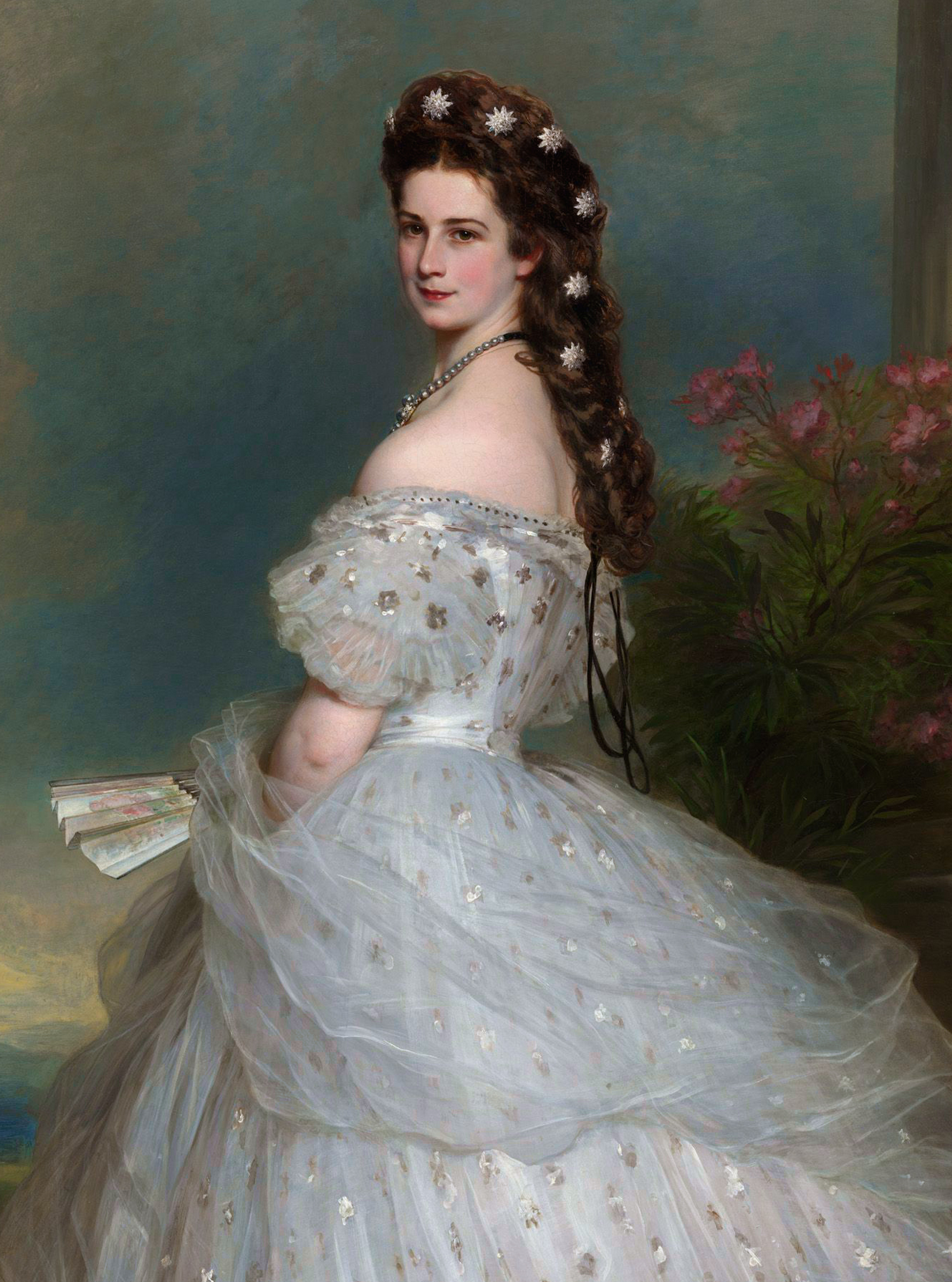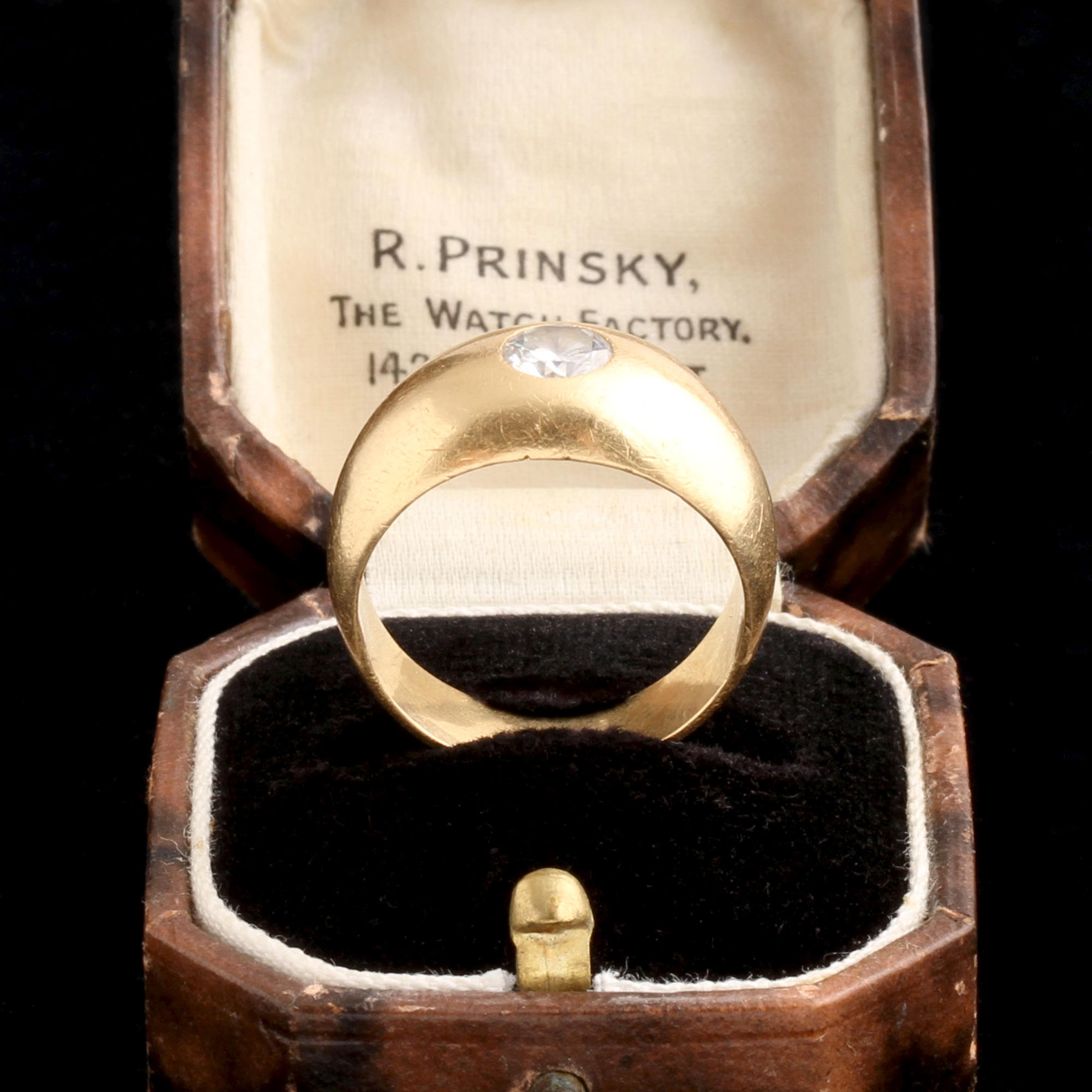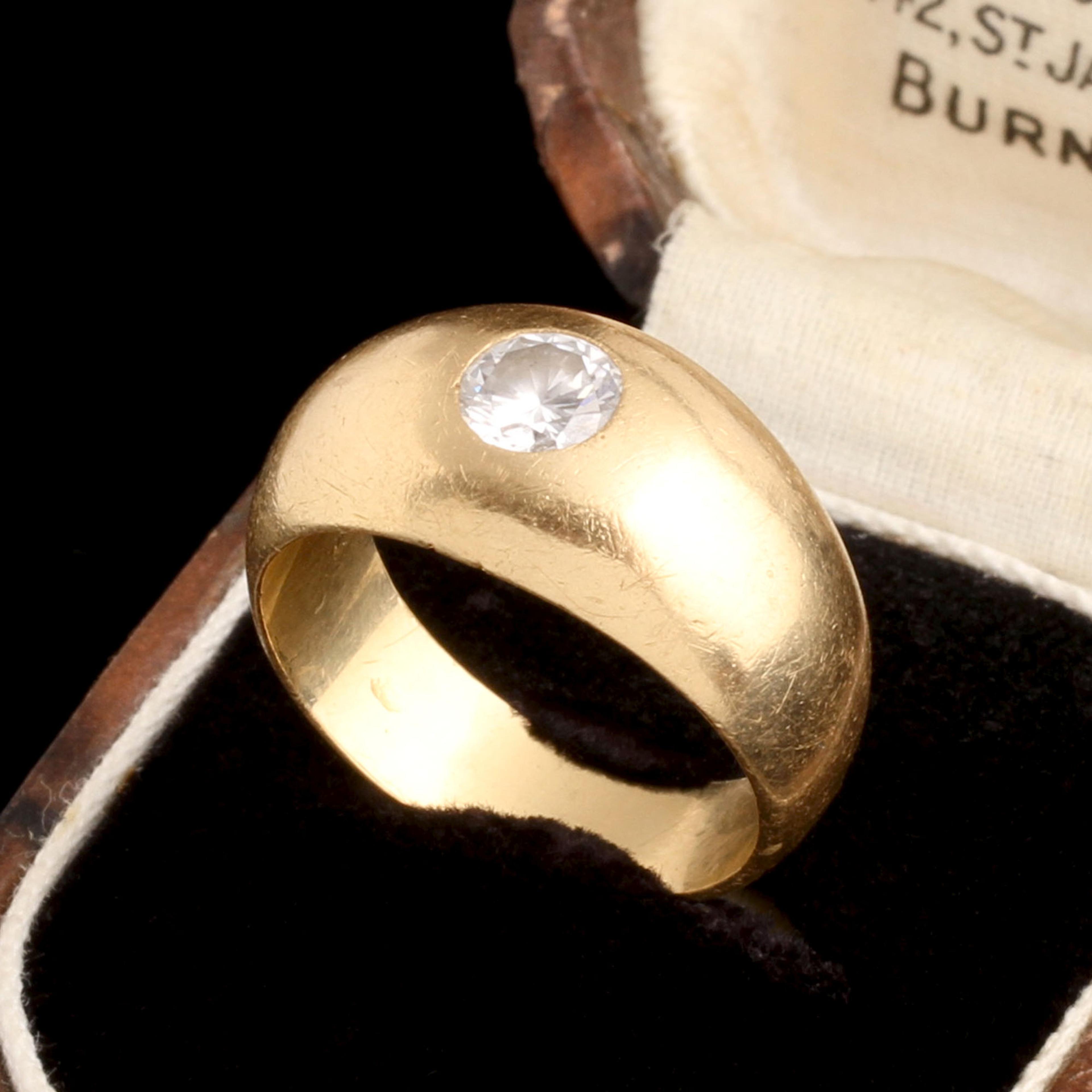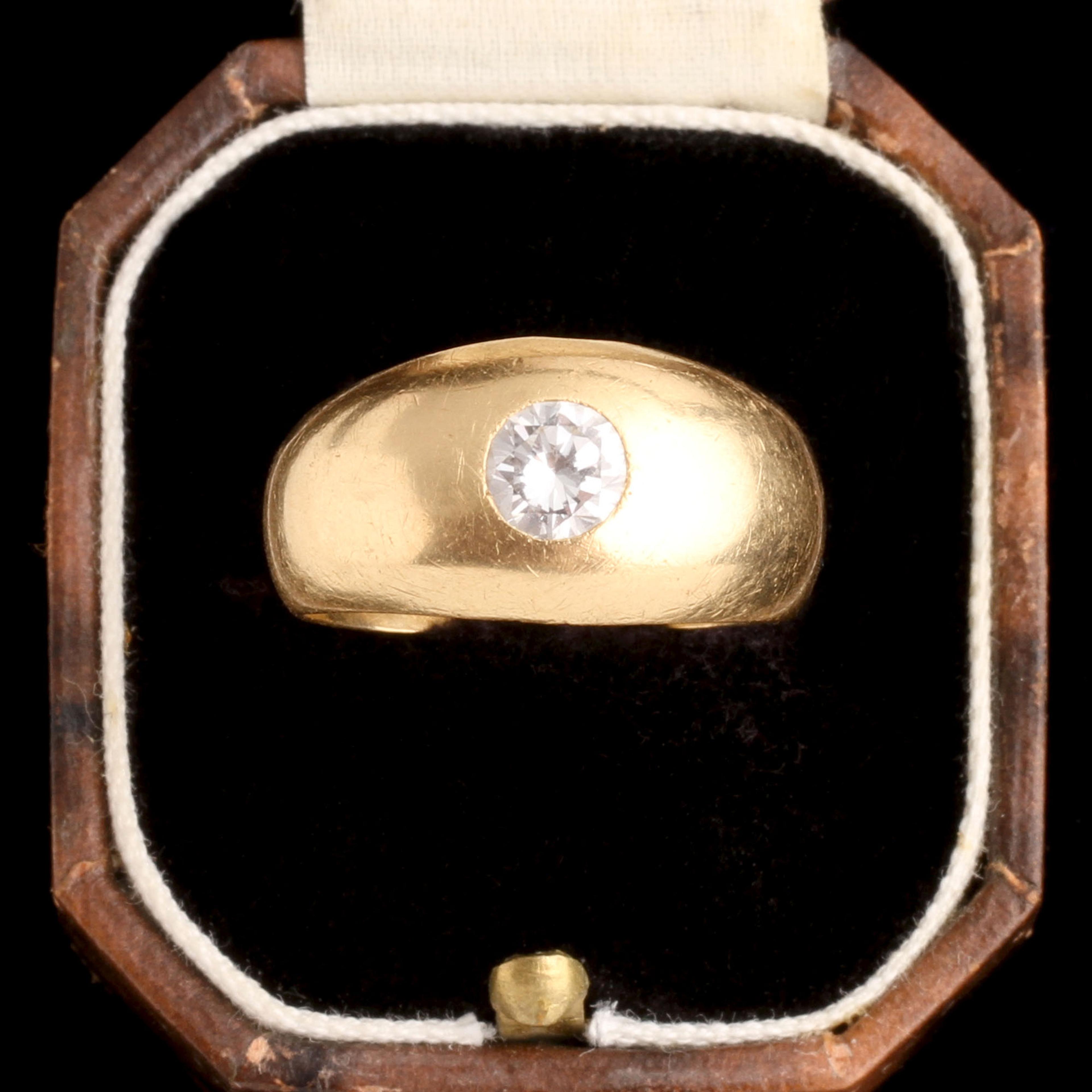Made around 1930 in 18k gold with fantastic French hallmarks, this ring is satiny, streamlined, and crowned with one of the earliest iterations of a brilliant cut diamond. This stone cutting technique had just been perfected by Belgian mathematician Marcel Tolkowsky who figured out a formula to best highlight a diamond's ideal proportions and angles for maximum brilliance and light dispersion. In case you're still reading, the ideal proportions for a round brilliant cut are: 100% diameter, 53% table, 43.1% pavilion, and 16.2% crown.
thedetails
- Materials
18k gold (marked), .63ct brilliant cut diamond
- Age
c. 1930
- Condition
Very good - minor surface wear commensurate with age and use; French hallmark
- Size
7.75, can be resized; 10.8mm head, 4mm rise off the finger, 5.5mm shank
Need more photos?
Send us an email to request photos of this piece on a model.
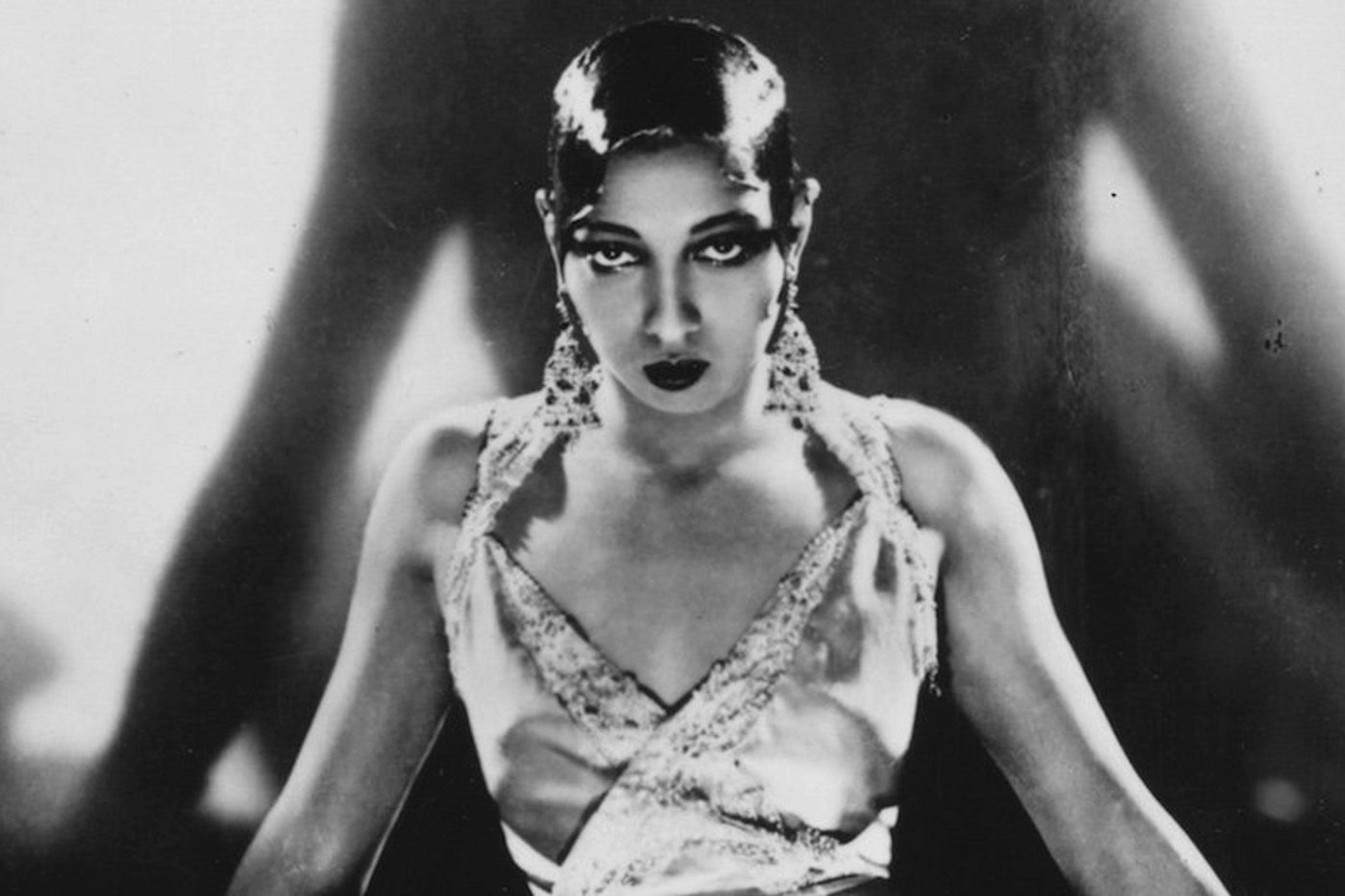
Aboutthe
Art DecoEra
1915 — 1940
Motifs like ziggurats and sunbursts, stripped of visual clutter, conveyed the optimism of an increasingly technological world. In jewelry, the predominant use of white metals let colorful gems take center stage. Stones that were opaque and true in color, like lapis lazuli, onyx, jade, coral, and opal were worked into designs alongside more precious and brilliant gems, like diamonds, sapphires, rubies, and emeralds. Extra-long beaded necklaces and tasseled “sautoirs” followed the narrow flapper silhouette. The baguette cut was an Art Deco innovation, and the decade saw increased use of other angular diamond cuts, like the precise calibré cut and the emerald cut. Synthetic colored gems, specifically ruby and sapphire, were celebrated as a scientific marvel. Marcel Tolkowsky, 21 years old at the time, published the design for the round brilliant cut in 1919.
please note:Terms of Sale
Antiques can be returned unworn and in original condition within 10 days of delivery for an exchange or refund minus the cost of shipping. Once a piece has been altered, including ring re-sizing, it is FINAL SALE.
